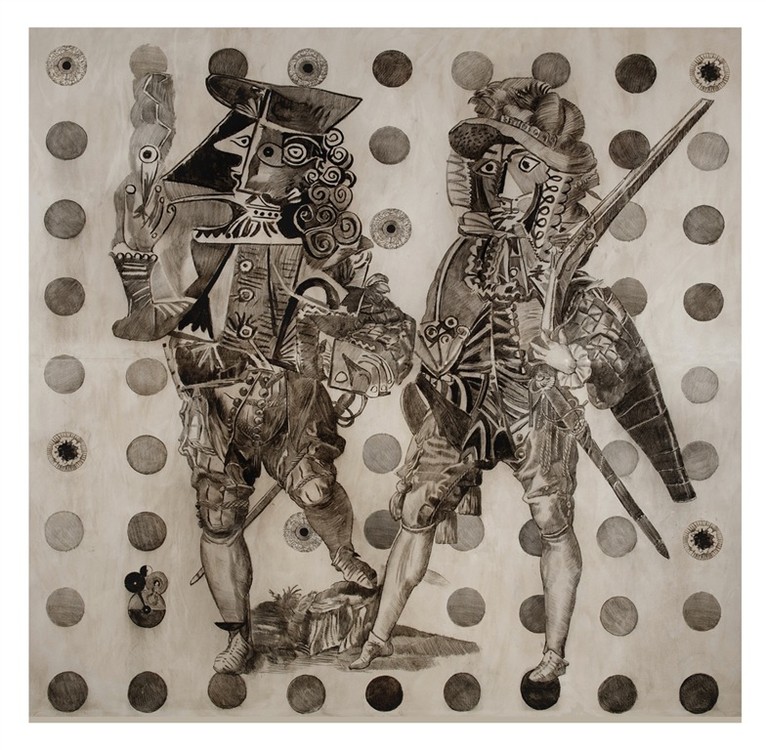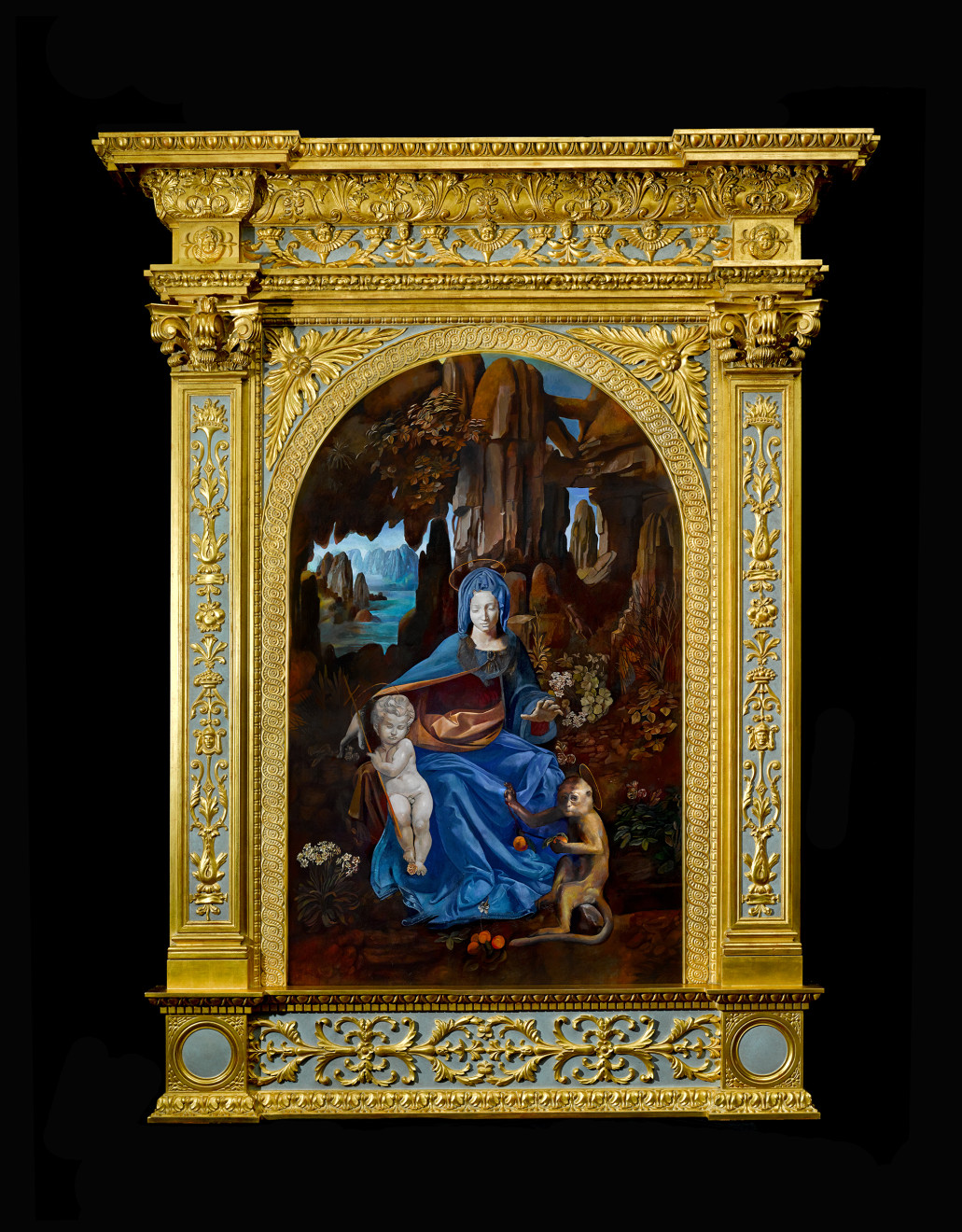


The possession of the facsimile steeps the owner in the cloying aura of the actual. The medium is also ideal for rendering gems, the gold crowns of angels and the riches of the material world with which their patrons wished to associate themselves. This imparts a jewel-like clarity and preciousness mimicking the aspiration of the Northern school to depict every detail of ‘God’s’ universe in its infinite and microscopic glory. It is important that this series of work is painted in oil paint, utilising the finest of pigments and the most refined of crystal clear poppy oil.

The artist is playing with our expectations, like a conjurer, he leads us to believe there is some esoteric connection between the elements of the painting, but the true subject of the work is at once Bosch’s powerful and valuable art historical artefact, and more pertinently, the problem of the subject in art and the notion of originality and authorship.

There is no fixed narrative, any symbolic resonances are coincidental and the selection of disparate imagery is rigorously arbitrary. They share the space of a painted universe but are unknowing of each other’s existence. Diverse and contradictory images have been smuggled into the already dense and multilayered scene from a screaming head by Bacon to clusters of brightly coloured Pokémon characters. At first glance von Lenkiewicz’s work appears to be a faithful reproduction of the original, but on closer inspection it is ‘contaminated’ with imagery from a wide range of historical and contemporary sources, both art historical and pop cultural. In this exhibition, von Lenkiewicz has transformed Bosch’s Garden of Earthly Delights into a post-historic, trans-cultural manuscript. His work explores historical intervention and demonstrates our own complacency towards iconic images from art history. Last night saw the opening of an extraordinary exhibition by the British painter Wolfe von Lenkiewicz.


 0 kommentar(er)
0 kommentar(er)
